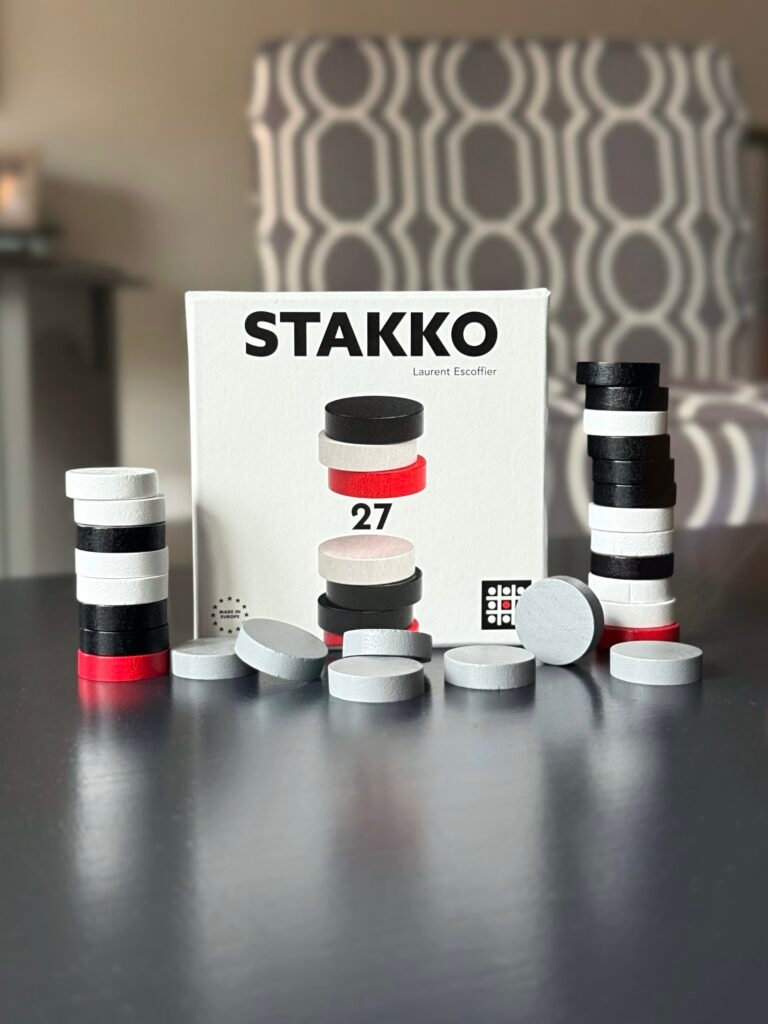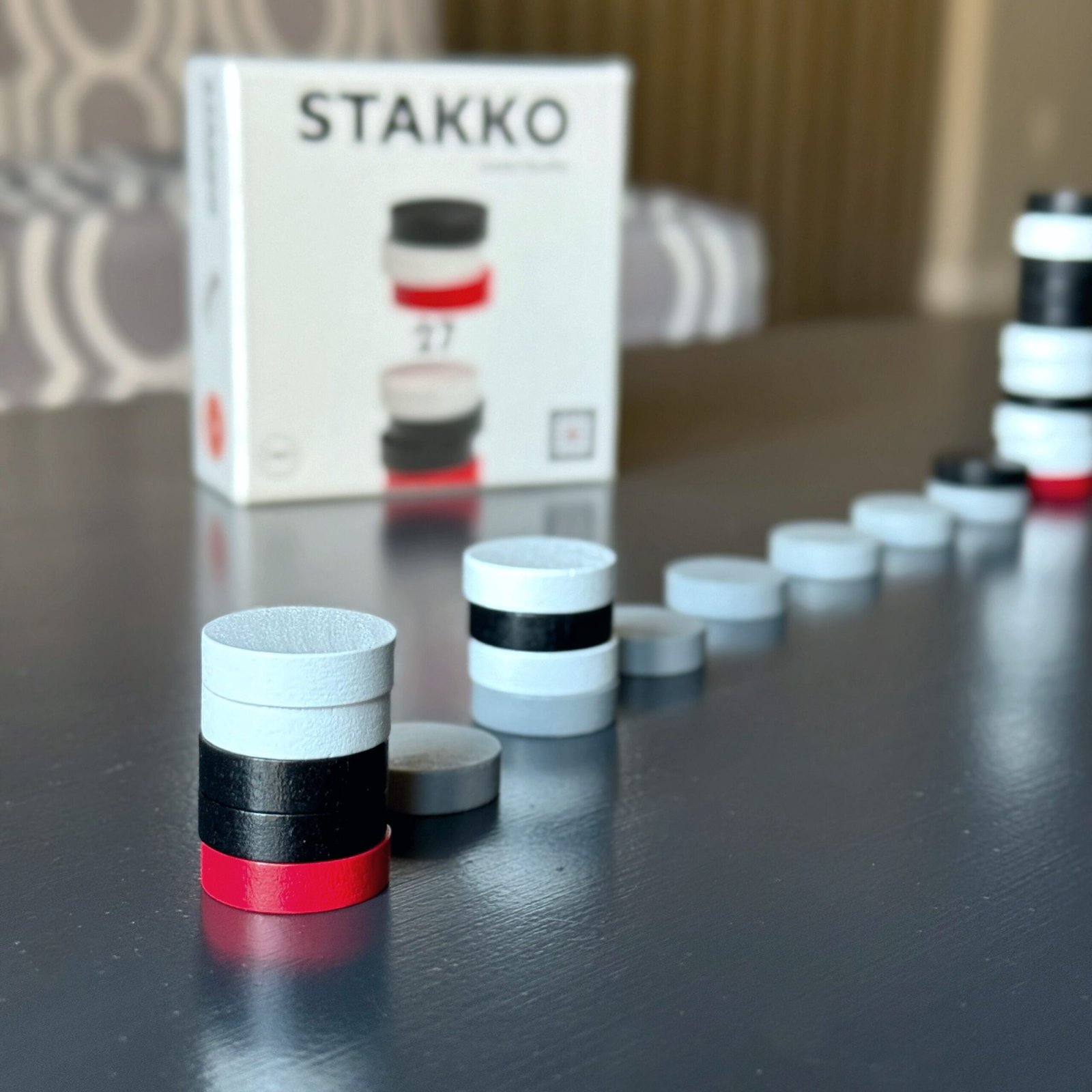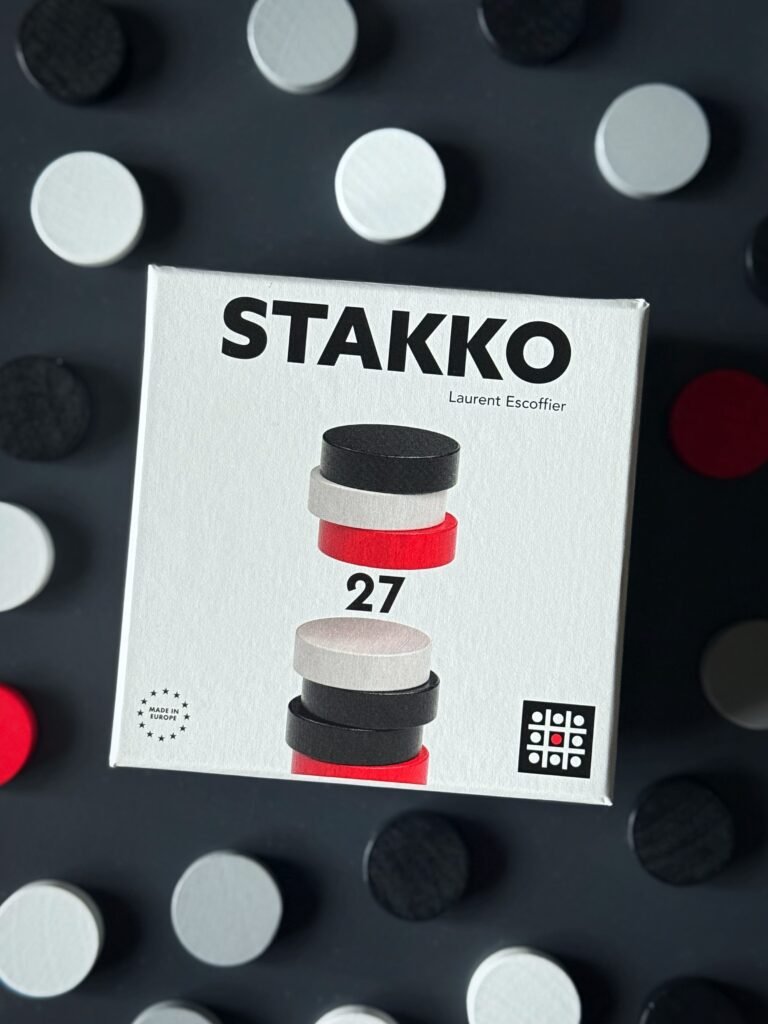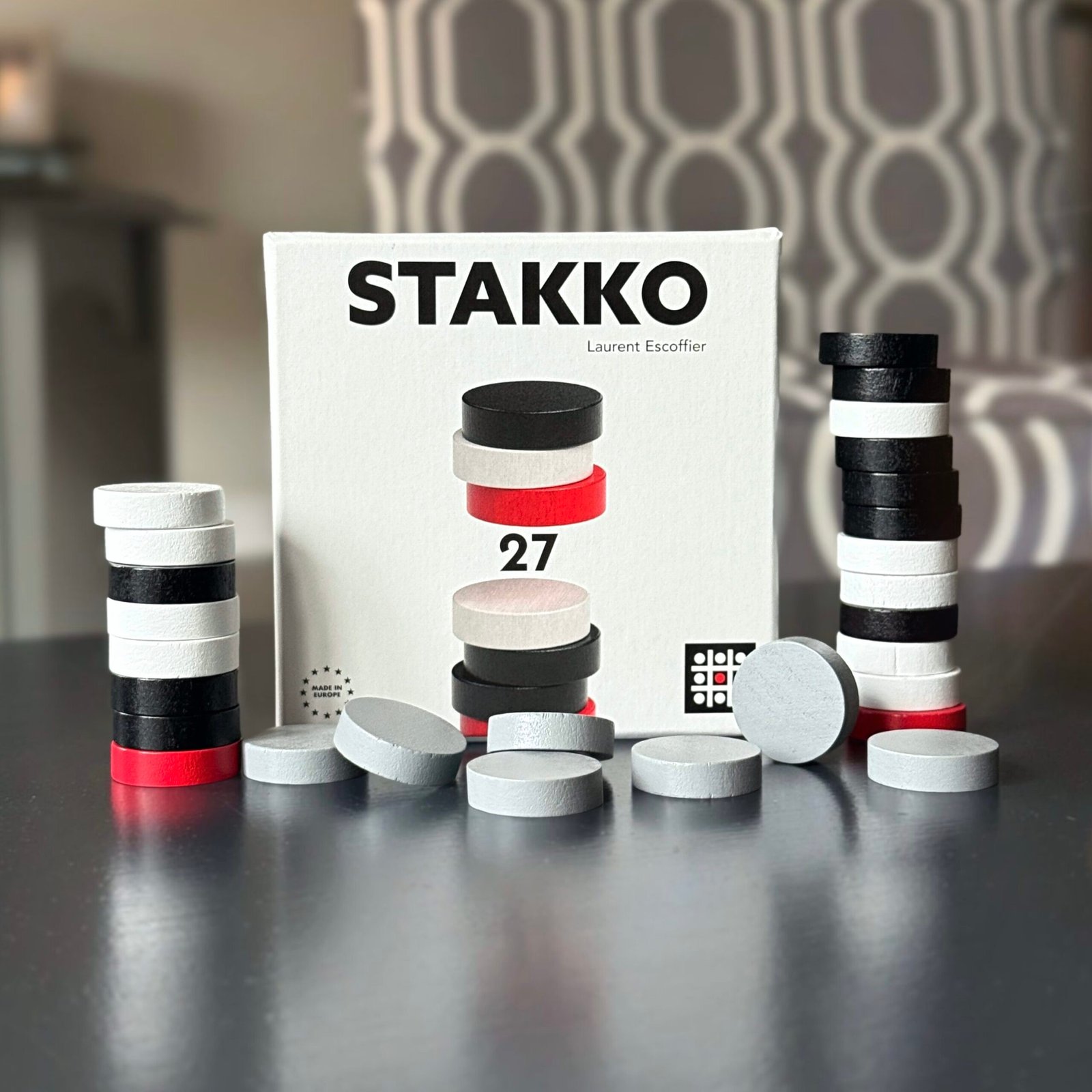Ruminate. React. Repeat.
Some players can’t help but math it out. You know the type. Hovering over the table, mentally tracing paths like neon grids, running through scenarios until only The Optimal Move remains.
In our house, we live with both species. Duncan gladly takes his time. He wants to know what’s possible, probable, and perilous before committing. Corinna? Five seconds, gut instinct, hope for the best. We wouldn’t have it any other way.

Stack Me If You Can
Stakko, or 27, depending on how you find it labelled, invites this split in style more openly than you’d expect from its small, unassuming box.
On the surface, Stakko is a simple stack-and-slide abstract puzzle where your pieces march from one end of a line of discs to the other. Each of you begins with a pile of discs at opposite ends of a disc line. The goal? End the game with the tallest stack on your opponent’s starting space. Easy enough.
The trick is in how you move.
The number of stacks you own dictates how far you must move on your turn. One stack? Move one space. Two stacks? Move two.
Every turn, you can move any number of discs from any one of your stacks, but your move must go exactly as many spaces forward as the number of stacks you control.
The math is right there in plain sight, and inevitably, in your head. Split your forces too eagerly, and suddenly your turn demands leaps you can’t make. Fail to plan, and a towering column of your discs might be hijacked when your opponent casually lands on top. This isn’t just about moving forward; it’s about forecasting the shape of your position three turns from now, factoring in not just your intentions but theirs.
Tactical Paralysis vs. Beautiful Chaos
One of our favourite things about Stakko is the “oh no” moment. The turn where you realize too late that your opponent can claim your tower. The slow unravelling of a back-and-forth battle over ownership. Or when you’re so close to victory, only to discover you’ve stranded your stack; two stacks left, one space to move, stuck forever. These moments make the game interesting, awful, and exciting all at once.
You could play Stakko reactively. Go with the flow, follow your instincts, and trust in chaos. Or you could sit back, stare long, and mentally chart every viable future until your opponent gently reminds you this isn’t Mythic Mischief and maybe it’s time to put the piece down.
Both approaches work. Both feel different.

One creates the exhilaration of just seeing what shakes out. The other scratches that tactical itch, rewarding those who enjoy mapping it all. If both players lean into analysis, the game slows to a crawl.
Brains Can Blunder Too
But the funny thing is, no matter how much you math it out, there’s no guarantee you’ll win just because you calculated more. Planning is vital, sure, but the game leaves room for instinct, for a well-timed risk, for the moment you didn’t anticipate when your opponent slips in and steals a stack.
We’ve tried to speed-play it. We’ve also sat in silence, each imagining chains of moves deep into the future, like tiny grandmasters of our own minimalist chessboard.
When your opponent moves quickly, it can throw you off guard. Cause you to blunder. If you’re going to crunch the numbers, you need to stay composed and not bite at the bait. If you’re playing with someone who loves to react, the tension doesn’t just come from the gameplay; it comes from within, as you remind yourself to be patient, to calculate the trajectory of the game without losing your nerve.
A Mirror Made of Discs
Stakko holds up a mirror to your style of play. Are you here to feel your way forward or think your way through? To leap or linger? Some abstract games enforce a pace, a mood, a mindset. Stakko encourages you to choose.

One More Round
For us, each game was over quickly. One game. Then another. Then, “okay, just one more.”
It’s addictive in the way the best abstracts are. Each round teaches you something. Each mistake stings just enough. You start to see patterns. You start to wonder if maybe, just maybe, mathing it out is the only real way to win. But what about instinct? Speed? Disruption? Could a more impulsive playstyle unnerve the thinker?
Stakko asks you to find out. Not overtly. It doesn’t bark orders or demand deep strategy. But it leaves you there with a set of rules and a battlefield of discs, quietly inviting you to puzzle through the geometry, or ignore it entirely. And in doing so, it doesn’t just challenge your logic. It challenges your approach.
Final Thoughts
Plenty of games allow for this dichotomy, accommodating different player personalities. But Stakko depends on it. Its design thrives on the contrast between instinct and intellect. It’s fast, clean, and endlessly replayable. And whether you’re playing loose or white-knuckling the table, it leaves you with the urge to try again. To do better. To think deeper. Either way, it’s only fifteen minutes.
Are you a thinker? A feeler? Do you count every possibility, or trust your gut?
Maybe the answer doesn’t have to be one or the other; maybe the real game is choosing which one you’ll be this time.

Corinna’s Rating: 6.1
Duncan’s Rating: 4.7
Check out Stakko on Board Game Geek for more information.
A copy of this game was generously provided by Asmodee for content creation.


Leave a Reply